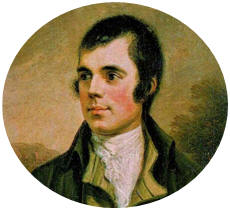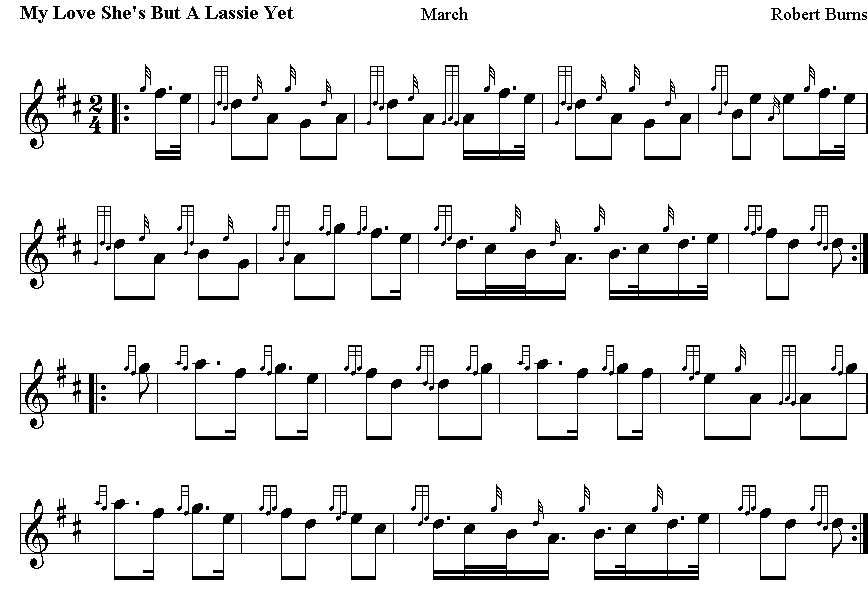The
title was fixed on the
tune because of two
songs composed to it,
one by Robert Burns and
the other by the
"Ettrick Shepherd,"
James Hogg, although the
tune seems to have first
appeared in print in
Bremner's Scots Reels"
of 1757 as "Miss
Farqharson's Reel." It
was rumored to appear in
James Aird's collection
(of Scottish tunes. The
writer of Gems of
Scottish Song asserts
that the original title
of the tune was "Lady
Bodinscoth's Reel."
Although of Scottish
origin it soon became a
popular tune south of
the Tyne, as attested to
the title's appearance
in Henry Robson's list
of popular Northumbrian
song and dance tunes
("The Northern
Minstrel's Budget"),
which he published c.
1800. "My Love She's But
a Lassie Yet" is also
the name of a Scottish
country dance, though a
somewhat unusual one.
The melody also found
currency across the
ocean; perhaps the most
widespread instrumental
folk tune in
Pennsylvania tradition,
and that it in fact
seems mostly to have
been known as an
instrumental air among
folk musicians in
general. The tune was
printed under the title
"Richmond Blues" in
George P. Knauff's
Virginia Reels, volume
II (Baltimore, 1839) and
was still cited as
commonly played for
country dances in Orange
County, New York, in the
1930's (Lettie Osborn,
New York Folklore
Quarterly). In the
South, old-timey
musicians know the tune
under the title "Too
Young to Marry.”
He is regarded as a pioneer of the Romantic movement and after his death became a great source of inspiration to the founders of both liberalism and socialism. A cultural icon in Scotland and among the Scottish Diaspora around the world, celebration of his life and work became almost a national charismatic cult during the 19th and 20th centuries, and his influence has long been strong on Scottish literature.
As well as making original compositions, Burns also collected folk songs from across Scotland, often revising or adapting them. His poem (and song) Auld Lang Syne is often sung at Hogmanay (the last day of the year), and Scots Wha Hae served for a long time as an unofficial national anthem of the country. Other poems and songs of Burns that remain well-known across the world today, include A Red, Red Rose, To a Louse, To a Mouse, The Battle of Sherramuir, Tam o' Shanter and Ae Fond Kiss.



